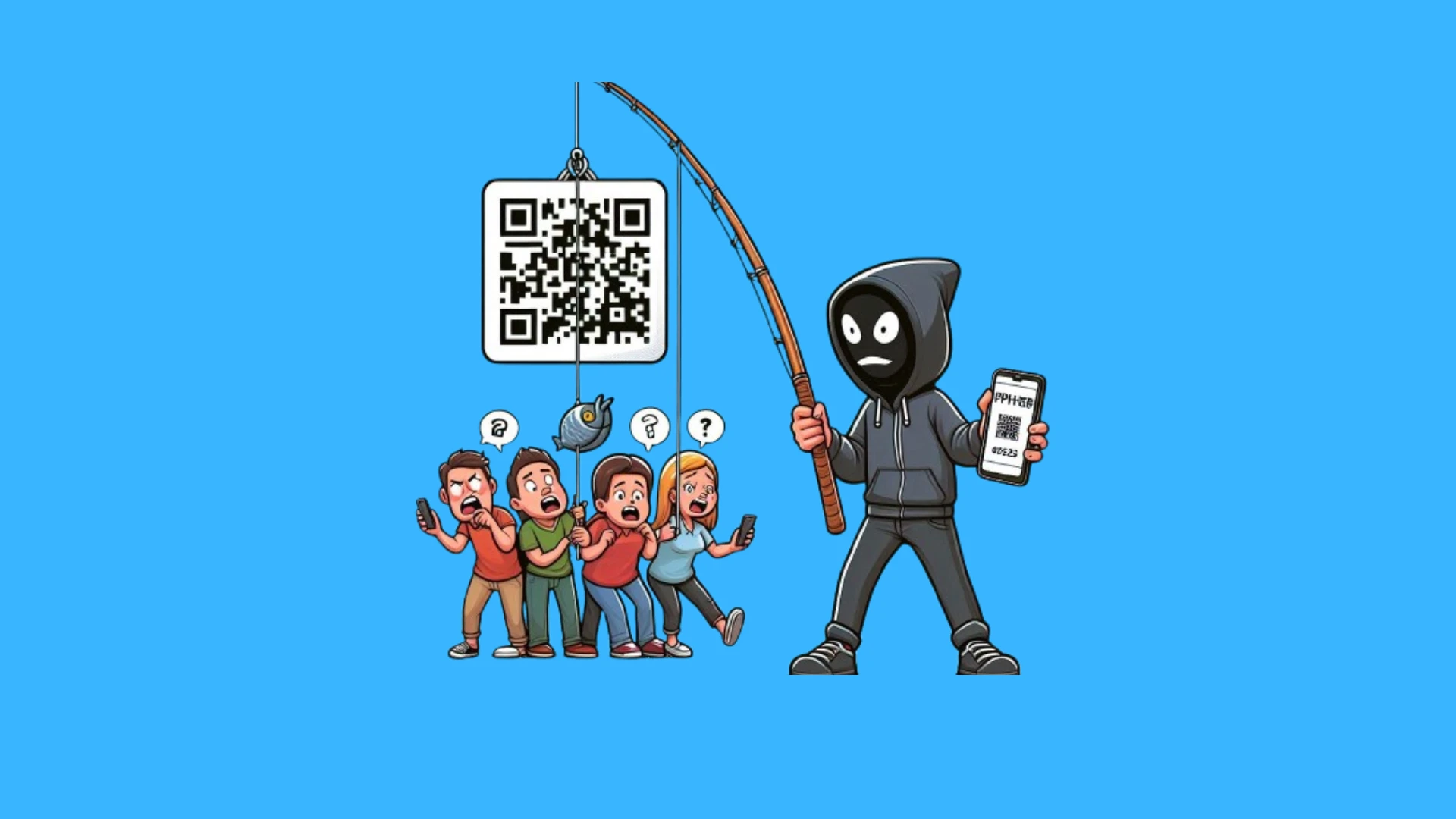QR Phishing in Nepal: Emerging Cybersecurity Threat and How to Stay Safe
In recent years, QR codes have become widely popular in Nepal as a convenient and fast way to access information, services, and payments. From scanning codes at restaurants for digital menus to making contactless payments via mobile banking, QR codes are now part of everyday life. However, with the growing adoption of QR codes comes a rising threat—QR phishing, or "qishing." This new form of cybercrime involves malicious actors using fraudulent QR codes to deceive users, potentially leading to data theft or financial loss.
In this blog, we explore what QR phishing is, how it affects Nepal, and how you can protect yourself from falling victim to this scam.
What is QR Phishing?
QR phishing involves cybercriminals creating malicious QR codes that lead unsuspecting users to fraudulent websites or malware-infected pages. When a user scans the malicious code, they may be tricked into entering personal details, login credentials, or even authorizing payments. What makes qishing particularly dangerous is that it’s difficult to detect, as users cannot see the destination URL or data behind the code until it's scanned.
The Rise of QR Codes in Nepal
In Nepal, QR codes are becoming a standard part of life, especially in urban areas. Mobile banking apps like eSewa, Khalti, and banks’ own QR code payment solutions have made it easier for businesses and consumers to perform transactions quickly and securely. QR codes are also used in various sectors, from government services to transportation, making them an ideal target for cybercriminals.
How QR Phishing Works
Cybercriminals can exploit QR codes by:
- Replacing legitimate codes: Fraudsters may tamper with printed QR codes, replacing them with malicious ones in public places like cafes, ATMs, or posters.
- Sending malicious codes: Users might receive QR codes through phishing emails or messages that claim to offer discounts or important information.
- Embedding in websites: Fraudsters can add malicious QR codes to fake websites, encouraging users to scan them to access services or offers.
Once scanned, the malicious QR code may redirect the user to a phishing website that looks legitimate, asking for sensitive information such as usernames, passwords, or payment details.
Real-world Examples in Nepal
Although there haven’t been widespread reports of qishing in Nepal yet, it is a growing global trend, and it’s only a matter of time before it becomes more common locally. As the digital economy grows in Nepal and more people rely on mobile payments, the potential for QR phishing attacks also increases.
Recent reports have shown QR phishing incidents worldwide, particularly in countries with growing mobile banking adoption. Criminals could target Nepal’s increasing digital payments ecosystem, leveraging the anonymity of QR codes to launch attacks.
How to Protect Yourself from QR Phishing
Here are some effective steps to mitigate the risk of qishing:
- Verify the Source of the QR Code: Only scan QR codes from trusted and reliable sources. Be cautious of codes found in public places, especially those that look tampered with or out of place.
- Check URLs Before Scanning: Some mobile apps allow you to preview the URL embedded in the QR code before accessing it. Always ensure the website looks legitimate and matches the organization it claims to represent.
- Use a Secure QR Scanner App: Use QR code scanning apps that offer additional security features, such as warning users about suspicious links.
- Avoid Scanning from Untrusted Sources: Be cautious when receiving QR codes via email, SMS, or social media from unknown senders.
- Monitor Your Transactions: Keep an eye on your financial transactions, especially after scanning QR codes for payments. Report any suspicious activity to your bank immediately.
- Educate Yourself and Others: Raise awareness about QR phishing among friends, family, and colleagues. The more people understand the risks, the less likely they are to fall victim to such scams.
The Role of Businesses and Institutions
Businesses in Nepal can also play a crucial role in preventing QR phishing by taking proactive measures:
- Ensure Secure QR Code Deployments: Regularly check the integrity of QR codes displayed at your premises to ensure they haven’t been tampered with.
- Educate Customers: Provide clear instructions and warnings to customers about the risks of QR phishing and how to verify legitimate codes.
- Invest in Security Solutions: Utilize advanced cybersecurity solutions that can detect and block access to malicious websites in case a user mistakenly scans a fraudulent QR code.
Conclusion
QR phishing, or qishing, is an emerging threat that has the potential to disrupt Nepal’s growing digital economy. As the country embraces digital payments and mobile banking, it is essential for both individuals and businesses to stay vigilant and take steps to protect themselves from this new form of cybercrime. By following basic cybersecurity practices and being cautious when scanning QR codes, we can collectively reduce the risk of qishing incidents in Nepal.
Stay informed, stay cautious, and always double-check before you scan.
Are you concerned about QR phishing in your business? Contact us to learn how to safeguard your operations and protect your customers from cyber threats.


